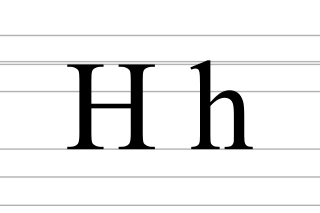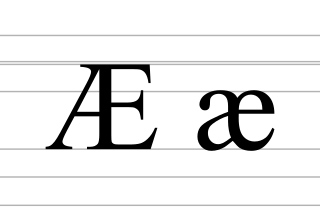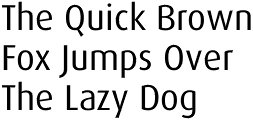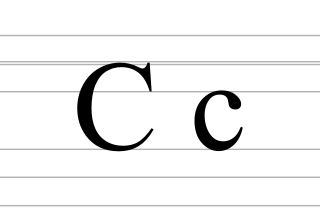
D, or d, is the fourth letter of the Latin alphabet, used in the modern English alphabet, the alphabets of other western European languages and others worldwide. Its name in English is dee, plural dees.

F, or f, is the sixth letter of the Latin alphabet and many modern alphabets influenced by it, including the modern English alphabet and the alphabets of all other modern western European languages. Its name in English is ef, and the plural is efs.

G, or g, is the seventh letter of the Latin alphabet, used in the modern English alphabet, the alphabets of other western European languages, and others worldwide. Its name in English is gee, plural gees.

H, or h, is the eighth letter of the Latin alphabet, used in the modern English alphabet, including the alphabets of other western European languages and others worldwide. Its name in English is aitch, or regionally haitch.

N, or n, is the fourteenth letter of the Latin alphabet, used in the modern English alphabet, the alphabets of other western European languages, and others worldwide. Its name in English is en, plural ens.

P, or p, is the sixteenth letter of the Latin alphabet, used in the modern English alphabet, the alphabets of other western European languages and others worldwide. Its name in English is pee, plural pees.

S, or for lowercase, s, is the nineteenth letter of the Latin alphabet, used in the English alphabet, the alphabets of other western European languages and other latin alphabets worldwide. Its name in English is ess, plural esses.

T, or t, is the twentieth letter of the Latin alphabet, used in the modern English alphabet, the alphabets of other western European languages and others worldwide. Its name in English is tee, plural tees.

Z, or z, is the twenty-sixth and last letter of the Latin alphabet. It is used in the modern English alphabet, in the alphabets of other Western European languages, and in others worldwide. Its usual names in English are zed, which is most commonly used in British English, and zee, most commonly used in North American English, with an occasional archaic variant izzard.

Thorn or þorn is a letter in the Old English, Old Norse, Old Swedish and modern Icelandic alphabets, as well as modern transliterations of the Gothic alphabet, Middle Scots, and some dialects of Middle English. It was also used in medieval Scandinavia but was later replaced with the digraph th, except in Iceland, where it survives. The letter originated from the rune ᚦ in the Elder Futhark and was called thorn in the Anglo-Saxon and thorn or thurs in the Scandinavian rune poems. It is similar in appearance to the archaic Greek letter sho (ϸ), although the two are historically unrelated. The only language in which þ is currently in use is Icelandic.

Æ is a character formed from the letters a and e, originally a ligature representing the Latin diphthong ae. It has been promoted to the status of a letter in some languages, including Danish, Norwegian, Icelandic, and Faroese. It was also used in Old Swedish before being changed to ä. It was also used in Ossetian before switched back to its Cyrillic counterpart. The modern International Phonetic Alphabet uses it to represent the near-open front unrounded vowel. Diacritic variants include Ǣ/ǣ, Ǽ/ǽ, Æ̀/æ̀, Æ̂/æ̂ and Æ̃/æ̃.

Modern English is written with a Latin-script alphabet consisting of 26 letters, with each having both uppercase and lowercase forms. The word alphabet is a compound of alpha and beta, the names of the first two letters in the Greek alphabet. Old English was first written down using the Latin alphabet during the 7th century. During the centuries that followed, various letters entered or fell out of use. By the 16th century, the present set of 26 letters had largely stabilised:
In English, the digraph ⟨th⟩ usually represents either the voiced dental fricative phoneme or the voiceless dental fricative phoneme. Occasionally, it stands for. In the word eighth, it is often pronounced. In compound words, ⟨th⟩ may be a consonant sequence rather than a digraph.

Th is a digraph in the Latin script. It was originally introduced into Latin to transliterate Greek loan words. In modern languages that use the Latin alphabet, it represents a number of different sounds. It is the most common digraph in order of frequency in the English language.

Đ, known as crossed D or dyet, is a letter formed from the base character D/d overlaid with a crossbar. Crossing was used to create eth (ð), but eth has an uncial as its base whereas đ is based on the straight-backed roman d, like in the Sámi languages and Vietnamese. Crossed d is a letter in the alphabets of several languages and is used in linguistics as a voiced dental fricative.

L, or l, is the twelfth letter of the Latin alphabet, used in the modern English alphabet, the alphabets of other western European languages and others worldwide. Its name in English is el, plural els.

C, or c, is the third letter of the Latin alphabet, used in the modern English alphabet, the alphabets of other western European languages and others worldwide. Its name in English is cee, plural cees.
Unicode supports several phonetic scripts and notation systems through its existing scripts and the addition of extra blocks with phonetic characters. These phonetic characters are derived from an existing script, usually Latin, Greek or Cyrillic. Apart from the International Phonetic Alphabet (IPA), extensions to the IPA and obsolete and nonstandard IPA symbols, these blocks also contain characters from the Uralic Phonetic Alphabet and the Americanist Phonetic Alphabet.

B, or b, is the second letter of the Latin alphabet, used in the modern English alphabet, the alphabets of other western European languages and others worldwide. Its name in English is bee, plural bees.



















